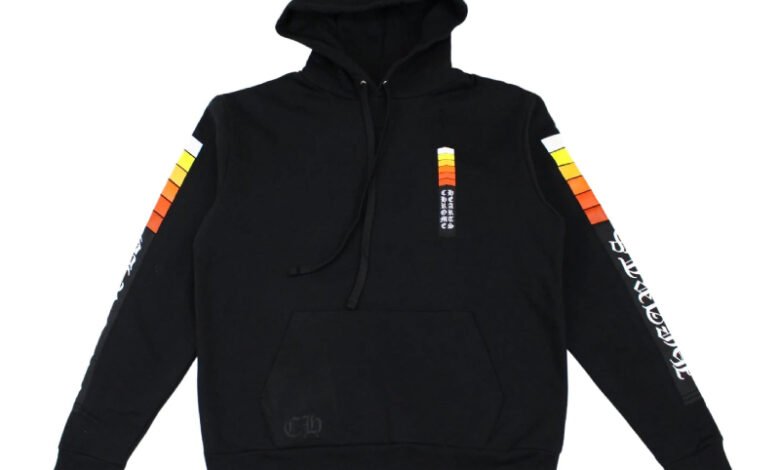
Introduction to Hood by Air
Hood by Air (HBA) is a fashion label that made an indelible mark on the fashion industry, emerging as one of the most influential and avant-garde streetwear brands of the 2010s. Founded by Shayne Oliver in 2006, the brand has captivated the fashion world with its bold, provocative designs and its unique blend of street culture, high fashion, and gender-fluid aesthetics. Hood by Air became synonymous with challenging traditional notions of fashion, identity, and art, pushing the boundaries of what could be classified as “streetwear” and exploring themes of youth rebellion, counterculture, and self-expression.
Shayne Oliver and the Birth of Hood by Air
The story of Hood by Air began with Shayne Oliver, a visionary designer from New York City. Oliver, who was raised in a creative environment, was deeply influenced by the vibrant street culture around him, particularly in the boroughs of Brooklyn and Manhattan. His experiences growing up in a world where hip-hop, rave culture, and fashion collided would later serve as a foundation for HBA’s aesthetics.
In 2006, Oliver, alongside a small group of collaborators, officially launched Hood by Air. The brand initially started as a project focusing on graphic T-shirts, which often featured striking logos and imagery that spoke to youth culture. However, Oliver’s vision quickly expanded beyond basic graphic design to encompass a full-fledged fashion brand that integrated high-concept runway shows, deconstructed silhouettes, and bold commentary on contemporary society.
A Unique Fusion of High Fashion and Streetwear
What set Hood by Air apart from other streetwear brands was its seamless fusion of high fashion with street influences. While streetwear was largely defined by oversized hoodies, sneakers, and logo-driven styles, Oliver sought to push this aesthetic further. His designs incorporated experimental silhouettes, deconstructed garments, and avant-garde tailoring techniques, which drew parallels to high fashion houses like Comme des Garçons and Balenciaga.
Oliver’s ability to combine streetwear with couture-level innovation earned Hood by Air the attention of both fashion insiders and outsiders. The brand didn’t just cater to streetwear fans; it appealed to high-fashion enthusiasts and those interested in exploring fashion as a medium for commentary. The use of luxurious fabrics, detailed craftsmanship, and intricate construction was a direct challenge to the often mass-produced, logo-heavy world of streetwear.
Gender Fluidity and Nonconformity
One of the most groundbreaking aspects of Hood by Air was its embrace of gender-fluid fashion. Oliver’s designs often blurred the lines between masculine and feminine aesthetics, incorporating oversized garments, skin-revealing pieces, and exaggerated silhouettes that rejected conventional ideas of gender. This was especially evident in the brand’s runway shows, where models of various genders and body types wore garments that had traditionally been associated with one sex or the other.
The exploration of nonconformity in both style and gender was a central theme throughout the brand’s identity. Hood By Air created a space for individuals who felt marginalized or excluded by mainstream fashion standards, offering them an opportunity to express themselves authentically. The clothing was not merely about what was worn, but also about making a statement—an act of rebellion against restrictive norms.
Hood by Air’s Impact on Fashion
Hood by Air’s impact on the fashion industry cannot be overstated. The brand’s groundbreaking approach to blending streetwear, high fashion, and political commentary changed the way people viewed luxury fashion and its relationship to youth culture. It brought attention to how streetwear could be more than just a clothing style; it could be a cultural movement that reflected a larger societal shift.
At the height of its popularity, HoodByAir became synonymous with a new wave of fashion that was less about class and more about identity. The fashion world had to take note of this shift, and as a result, HBA’s influence permeated beyond its own runway shows. Major fashion houses began to incorporate elements of street culture and subcultures into their collections, and brands like Off-White, Fear of God, and Vetements followed a similar path of combining streetwear elements with luxury fashion.
The Controversial Runway Shows
Hood by Air was known for its unconventional and often controversial runway shows, which were part of the brand’s larger conceptual vision. Oliver used the runway as a platform for not just showcasing clothing, but for making bold statements about race, gender, and identity. These shows often featured models that embodied the brand’s rebellious, punk ethos, and they weren’t afraid to challenge the status quo of what a fashion show should be.
In some of the shows, models wore garments that were intentionally provocative or boundary-pushing. For example, in one of HBA’s shows, models wore masks and face coverings, adding an element of anonymity and obscurity to the presentation. The brand also used fashion to comment on racial issues, with the clothing serving as a powerful symbol of resistance. The shows were not just about selling clothes; they were about creating conversations around art, identity, and culture.
Collaborations and Partnerships
As Hood by Air’s influence continued to grow, Oliver began collaborating with various high-profile brands and designers. These collaborations helped solidify HBA’s status as one of the most innovative brands in the fashion world. Notably, Hood by Air partnered with major streetwear labels such as Nike, as well as luxury fashion houses like Balenciaga. These collaborations allowed HBA to reach a broader audience and further establish its reputation as a boundary-pushing brand.
Oliver’s relationship with the fashion elite was not without its tensions, though. While the brand’s designs gained recognition and acclaim from critics and consumers alike, Oliver’s refusal to conform to the traditional fashion calendar and industry standards often led to friction with established players. His work, which was deeply rooted in a punk and underground sensibility, often clashed with the commercial nature of the luxury industry.
The Decline and Legacy of Hood by Air
Despite its success and cultural impact, Hood by Air faced difficulties in maintaining its momentum. In 2017, Oliver took a step back from the brand, and HBA went on hiatus. During this period, many wondered whether the brand would return, as its influence remained profound but less visible in the mainstream.
While Hood by Air never truly disappeared, the absence of Oliver’s visionary leadership left a gap in its creative direction. However, the legacy of Hood by Air continues to live on, not just in the clothes that were produced, but in the cultural shift it helped inspire. The brand played a pivotal role in the rise of streetwear’s prominence in high fashion and in the widespread acceptance of non-traditional, inclusive design.
Conclusion
Hood by Air was much more than a fashion label—it was a cultural movement that redefined the intersections between streetwear, high fashion, and identity. Shayne Oliver’s bold vision, which embraced gender fluidity, nonconformity, and the collision of street culture with luxury fashion, left an indelible mark on the fashion world. Even in its absence, the influence of Hood by Air is still felt today, as it continues to inspire new generations of designers and fashion enthusiasts to break boundaries and rethink the very nature of fashion.



